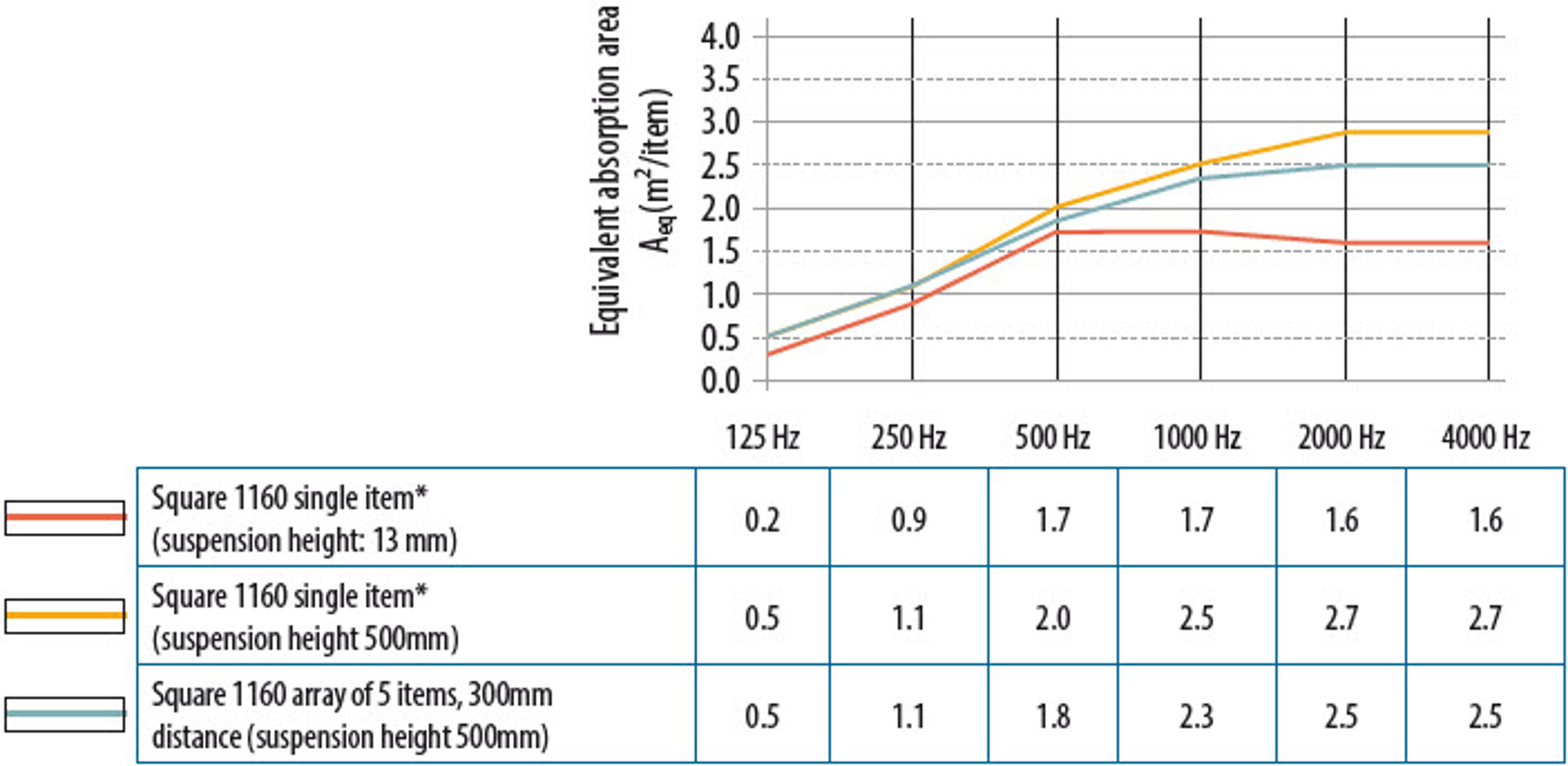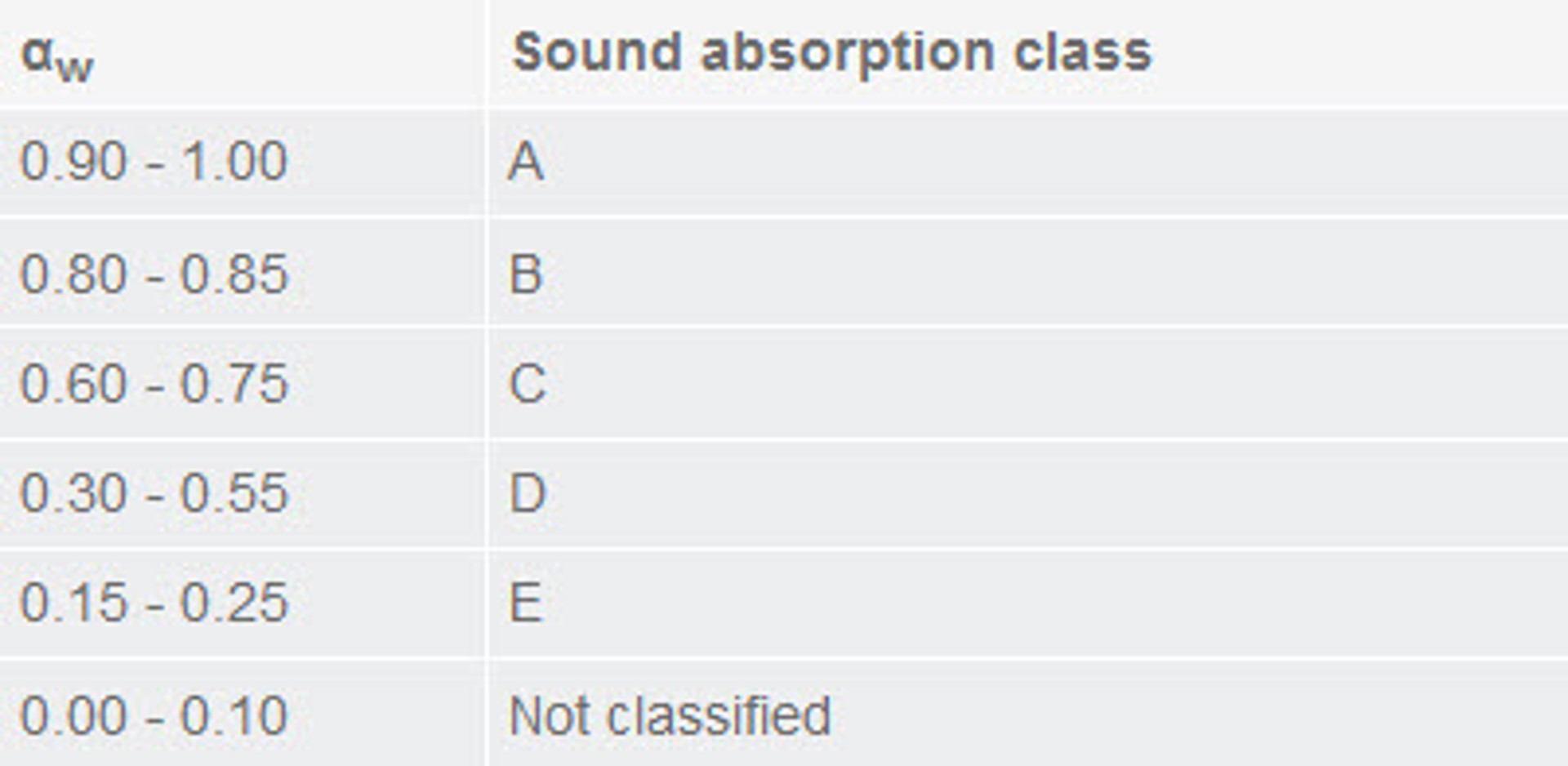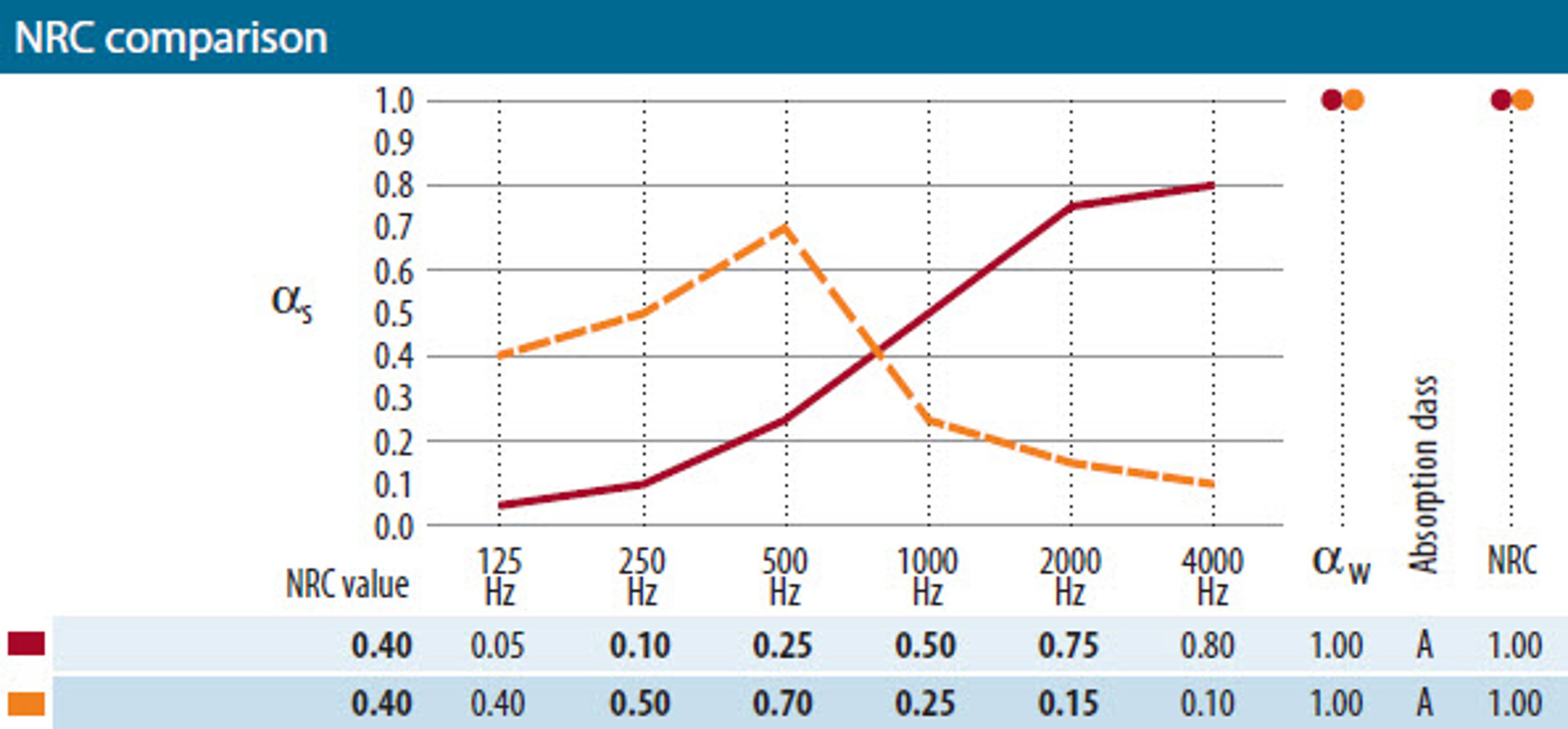Sound absorption is measured using the sound absorption coefficient alpha (α), which has a value between 0 and 1.00. Zero represents no absorption (total reflection), and 1.00 represents total absorption of the incident sound. This coefficient is used to determine the commonly used sound absorption indicators explained below:
Weighted sound absorption coefficient (αw)
Alpha W or αw is calculated in accordance with ISO 11654 using the practical sound absorption coefficient αp values at standard frequencies and comparing them with a reference curve. All suspended ceiling suppliers in Europe provide αw for their products.

Stone wool used in Rockfon products offers the highest performances compared to many other materials.
Equivalent sound absorption area (Aeq)
The sound absorption property of islands and baffles is quantified using the equivalent sound absorption area Aeq expressed as m² per object. The Aeq value is measured in accordance with the ISO 354. This is the area of a fictive absorbing surface of αw = 1.00 which would absorb the same amount of sound as the tested island or baffle. There is no standardised “weighted” equivalent sound absorption area, so the best way to compare a plane ceiling with a ceiling of islands or baffles is to calculate the reverberation time for each room and situation.

Rockfon islands and baffles provide high sound absorption where modular suspended ceilings are not suitable.
Absorption classes
The international standard ISO 11654 breaks absorption performance into five classes, from A to E. The αp values are compared to a series of fixed reference curves. The range between the reference curves is wide, so absorption classes provide only a rough indicator of sound absorption.

Many Rockfon ceilings offer class A sound absorption.
Noise Reduction Coefficient (NRC)
Calculated in accordance with ASTM C423, the Noise Reduction Coefficient (NRC) provides a single-number rating for sound absorption (higher values are better). It is the mathematical average of the measured sound absorption coefficient αs at 250, 500, 1000 and 2000 Hz frequencies. NRC gives equal weighting across the frequency range, which means it is not as accurate as αw.































